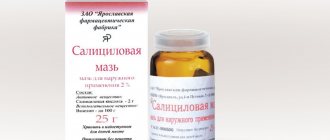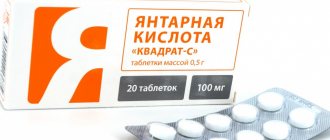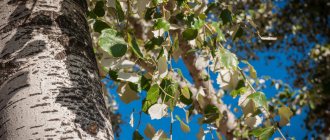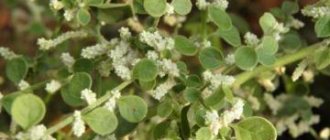Pharmacodynamics and pharmacokinetics
When used as a local remedy, it has a distracting, irritating, and also weak antiseptic effect . In low concentrations it provokes a keratoplastic effect , in high concentrations it provokes a keratolytic effect .
The plasma concentration of salicylic acid reaches its maximum 5 hours after applying the drug to the skin under an occlusive dressing. Approximately 6% of the total absorbed amount of the substance is excreted unchanged in the urine, while the majority is excreted as metabolic products.
Pharmacological effect
The medicine is intended for local use. The therapeutic effect is determined by anti-inflammatory, antiseptic, keratolytic, distracting and drying effects.
At a high concentration of salicylic acid, the drug has an inhibitory effect on microbial proteins. Has a high effect on nerve receptors. Helps reduce pain, improves tissue nutrition and effectively fights the causes of pathologies.
As a result of the high content of the active substance, there is an effect on the sebaceous and sweat glands. Therefore, it is active for the treatment of seborrhea, pimples, acne, and also for the care of oily skin types.
At low concentrations, salicylic acid has a weak antimicrobial effect. Since it belongs to the group of non-steroidal anti-inflammatory drugs, it has a number of therapeutic properties:
- Relieves tissue swelling.
- Stops itching.
- Has a vasoconstrictor effect.
- Suppresses the inflammatory process.
The drug is able to delicately remove the top layer of skin, promoting its further regeneration. Salicylic acid normalizes the structure of cell membranes, cleanses and narrows pores, and organizes the outflow of sebaceous secretions. Therefore, it is considered an essential medicine against burns, dandruff, wounds and other dermatological diseases.
When used externally, the therapeutic effect is observed after 3-5 hours. Excreted by the kidneys, unchanged in the amount of 6%.
Indications for use
The drug is used as a monotherapeutic agent and as part of combination drugs:
- for various types of painful skin conditions, including dys- and hyperkeratosis , psoriasis , ichthyosis , burns, acne, oily seborrhea , eczema , warts calluses , pityriasis versicolor ;
- with hyperhidrosis of the feet;
- for hair loss.
Salicylic acid, application in medicine and cosmetology.
Salicylic acid is known to many as a medicine for treating skin diseases. In addition, this same compound is the basis of the well-known Aspirin. Salicylates are salts of salicylic acid, found in many medicinal plants that have anti-inflammatory and antipyretic effects (for example, raspberries are rich in them). It is also a common ingredient in many skin care products.
Salicylic acid, lat. Acidum salicylicum (genus Acidi salicylici ) , (from the Latin salix “willow”, from the bark of which it was first isolated) - 2-hydroxybenzoic or phenolic acid, C6H4(OH)COOH; colorless crystals, highly soluble in ethanol, diethyl ether and other polar organic solvents, poorly soluble in water (1.8 g/l at 20 °C).
Isolated from willow bark by the Italian chemist Rafael Piria and then synthesized by him.
Found naturally in plants as derivatives, usually as a methyl ester glycoside, salicylic acid in particular was first isolated from willow bark, hence its name. Free salicylic acid, along with salicylic aldehyde, is found in small quantities in the essential oil isolated from the flowers of some species of spirea (Spiraea ulmaria, Spiraea digitata).
Salicylic acid is easily soluble in ethanol and diethyl ether, and slightly soluble in carbon disulfide. Solubility in water (g/l): 1.2 (0 °C), 1.8 (20 °C), 8.2 (60 °C), 20.5 (80 °C).
Pharmacological action - wound healing, antiseptic, local irritant.
Promotes cleansing of the wound from purulent discharge and its healing, eliminates perifocal inflammation. It has a distracting, keratolytic (in high concentration) and keratoplastic (in low concentration) effect. Suppresses the secretion of sebaceous and sweat glands.
It is used as monotherapy and as part of combination drugs for inflammatory, infectious and other skin lesions, incl. burns, psoriasis, eczema, dyskeratosis, ichthyosis, acne vulgaris, warts, hyperkeratosis, calluses, calluses, oily seborrhea, pityriasis versicolor; hair loss; sweaty feet.
Due to its antiseptic effect, salicylic acid is used in food preservation;
Production of azo dyes, fragrances (salicylic acid esters);
Colorimetric determination of Fe and Cu to separate thorium from other elements.
Salicylic acid is a product that is used externally. It is quite cheap, but at the same time it has several methods of use and really helps with various problems.
Principles of action on the skin:
- Deep penetration at the site of application.
- Suppression of the activity of the sweat and sebaceous glands.
- Elimination of the inflammatory process.
- Softening of the outer layer of the skin and its gradual discoloration, which leads to easy separation from the surface of the skin.
- Cleansing wounds from purulent discharge and stopping the spread of pathogenic bacteria.
- Accelerating the healing process by increasing blood flow to this area of the skin.
Properties: antimicrobial and irritant.
There are several methods of use; salicylic acid is available in different forms with different concentrations of the active substance:
- solution (aqueous and alcoholic) - 1% and 2%;
- ointment – 1%, 2%, 5%, 10%;
- powder (powder);
- paste;
- patch.
In medicine, the use of salicylic acid is effective for the treatment of skin diseases of various origins:
- pyoderma;
- mycosis of the feet;
- versicolor and pityriasis versicolor;
- psoriasis;
- seborrhea;
- hair loss;
- dermatitis.
- keratoses;
- eczema.
- healing of weeping wounds, for example, after a burn.
In these cases, it is better to use ointments with the required concentration of the active substance, and when treating lichen, the use of salicylic acid should be combined with sulfuric ointment. They will enhance each other's antimicrobial properties.
Salicylic acid is also used to reduce pain with:
- rheumatism;
- gout;
- arthrosis and arthritis.
The use of salicylic acid in cosmetology.
Indications:
- hyperhidrosis and hyperkeratosis;
- skin burns;
- acne and post-acne;
- warts;
- corns and calluses;
- black dots;
- eczema;
- infectious skin diseases;
- inflammation of the skin;
To get rid of these problems, it is recommended to use a solution of salicylic acid.
Contraindications for use:
- hypersensitivity;
- very dry skin;
- renal failure;
- pregnant women and during lactation;
- prohibited for use by children under 3 years of age.
Products containing salicylic acid and BHA are generally safe for adults when used as directed, but are not always safe for children. The Centers for Disease Control and Prevention (CDC) and the American Academy of Pediatrics recommend that children under 18 years of age not use this ingredient.
Children may have unexpected reactions to topical salicylic acid because younger skin may absorb the substance more quickly and experience more irritation.
It is always necessary to be careful with the dosage and use of salicylic acid to avoid consequences, such as burns.
Salicylic acid in cosmetology belongs to the class of BHA acids. It is a fat-soluble acid, which means it can penetrate deep into cells through the pores, and also has antiseptic and anti-inflammatory properties. Therefore, it is perfect for problematic, rash-prone and oily skin, and helps fight open and closed comedones.
BHA acids can dry out the skin due to interaction with sebum. To prevent this from happening, use products with a salicylic acid concentration of 0.5–2% and do not forget about moisturizer and sunscreen.
Salicylic acid is widely used in dermatology and cosmetology, as a weak antiseptic, plus an irritant and keratolytic agent. Also, it is an excellent additional agent for synergy with other peeling components due to the phenolic group, denatures proteins and facilitates passage through the stratum corneum. During the chemical peeling procedure using salicylic acid, the stratum corneum and epidermis are damaged, recovery takes place within 1-2 days, and during this time pronounced peeling is observed. Clinical indications for their use: hypermigmentation, melasma, moderate photoaging, acne and post-acne. The minimal effect is visible after the first procedure, but a significant improvement in the appearance of the dermis occurs after several procedures; the appointment and implementation of the procedure is carried out by a specialist.
Alternatives to salicylic acid.
Alpha Hydroxy Acid (AHA): Like BHAs, AHAs work to exfoliate the skin and remove dead skin cells. AHAs (such as glycolic acid) are also effective against acne, and these substances can help your skin appear smoother and more even-toned.
Benzoyl peroxide: This product is effective as an acne treatment, but instead of exfoliating, benzoyl peroxide kills bacteria that cause inflammation and dries out the affected skin.
Scrubs: When you really want to exfoliate your skin, using a brightening scrub can be your best friend. Look for ingredients such as vitamin C and citric acid.
Difference between salicylic acid and benzoyl peroxide.
Salicylic acid is a legendary exfoliant and benzoyl peroxide is an organic aromatic compound and a very worthy antibacterial analogue of “salicylic acid” that kills acne-causing bacteria right inside the pores. Dermatologists believe that benzoyl peroxide is better suited for sensitive skin, since salicylic acid is still an acid that can lead to peeling, irritation and allergic reactions if not handled carefully.
What percentage is best to use?
For facial care, the optimal concentration of salicylic acid is 0.5-2%.
For use on the body in almost all cases, you can use a more active salicylic acid in a concentration of about 3%. It is important to consider: if you are not sure how your skin will react to the use of a product containing salicylic acid, first consult with a specialist who will give you all the necessary care recommendations.
Possible side effects:
If you overuse salicylic acid or use too much over a long period of time, side effects may occur. Most often these problems are associated with skin reactions.
Below are some of the most common side effects:
Sun and Chemical Burns – Excessive amounts of salicylic acid can cause chemical burns because it makes the skin overly sensitive to the sun. Sunburn is a common side effect for people who use any product containing BHA, so be sure to apply sunscreen along with any salicylic acid-based product.
If your skin is dry or feels oily, a salicylic acid treatment can have a drying effect as it helps exfoliate and renew the skin. Sometimes, however, these products have the opposite effect as the skin overreacts to dryness by producing more sebum than usual. Since both of these problems can lead to acne and other skin problems, reduce your salicylic acid intake to reduce irritation.
Salicylic acid is naturally occurring, but that doesn't mean this exfoliant and anti-inflammatory is for everyone. Whether you've been using a salicylic acid product for years or are considering adding it to your routine, be sure to understand its uses, applications, and potential side effects.
Sources: https://cosmar.com.ua/, https://www.letoile.ru/, https://iledebeaute.ru/, https://med.vesti.ru/, https://www. kiz.ru/.
Educational phone numbers : 8-812-248-99-34, 8-812-248-99-38, 8-812-243-91-63, 8-929-105-68-44
Application for ordering products here
Seminar schedule here
Salicylic acid: instructions for use
In accordance with the instructions for Salicylic acid, the solution is used externally. It is recommended to treat the affected surface with it twice a day.
The medicine is applied with a cotton swab. To treat an area the size of your palm, no more than 5 ml of solution is required. The highest dose for adults is 2, for children - 0.2 grams per day. The course of treatment is no more than 7 days.
In otorhinolaryngological practice, it is recommended to instill the solution into the sore ear twice a day, 6 drops.
For acne, 1 percent salicylic acid is usually used. A two and three percent solution is suitable only for people with oily skin. If there are several pimples, the product is applied pointwise to each of them. If there are a lot of acne, wiping the entire surface of the facial skin with a cotton swab soaked in the solution is recommended.
The procedure is continued until a slight tingling sensation appears. After treatment, the face can be rinsed with water to neutralize the effect of the acid.
For Devergie's disease , psoriasis , seborrhea , ichthyosis , the use of salicylic acid 2 percent in the form of an ointment is indicated. In case of severe inflammation, the drug should be diluted with Vaseline 2-4 times. Frequency of applications - 1-2 times a day. After the peeling disappears, treatment is continued using other means.
Apply a thin layer of ointment to the wound surface. The treated surface is covered with sterile gauze. It is also possible to apply a napkin soaked in ointment to the wound.
Before applying a bandage, you should open the blisters, clean the wound of necrotic tissue and rinse it with an antiseptic.
It is recommended to change the dressing every 2 or 3 days until the wound is completely cleared of purulent and necrotic masses. The duration of treatment can vary from 1 to 3 weeks.
How to treat acne with salicylic acid
The antiseptic drug effectively fights pimples, acne and other pathologies that are accompanied by dysfunction of the sebaceous glands.
Lotions are made for this. The skin is pre-cleansed and dried. Soak a cotton swab in a salicylic acid solution and wipe your face. For small and rare rashes, they are burned with the drug locally using a cotton swab.
After the procedure, the face must be washed and lubricated with moisturizer.
It is recommended to carry out treatment no more than 2 times a week. Duration of the course until acne disappears.
Interaction
Salicylic acid can increase the permeability of the skin to other topical medications and, accordingly, enhance their absorption.
Absorbed salicylic acid may potentiate the side effects of sulfonylureas , oral hypoglycemic agents and methotrexate .
The solution is pharmaceutically incompatible with zinc oxide (forms insoluble zinc salicylate) and with resorcinol (forms melting mixtures).
Skin exfoliation
While other antiseptics may only kill bacteria that cause acne and other problems, salicylic acid is one of the best products for removing dead skin cells and smoothing the skin. As a type of keratolytic, it has the ability to improve skin texture by exfoliating, reducing roughness and stimulating cell turnover. We have already talked about how to exfoliate with salicylic acid.
special instructions
What is salicylic acid?
The Pharmacopoeia describes salicylic acid as an odorless, slightly soluble substance in cold water, which can take the form of colorless and odorless needle crystals or white crystalline powder.
The structural formula of salicylic acid is
The empirical formula is C7H603. The systematic name of the compound is 2-hydroxybenzoic acid.
Receipt
The substance was first isolated in 1838 from willow bark. Hence its traditional name - salicylic acid: in Latin the word “willow” sounds like “salix”. The discovery belongs to the Italian chemist R. Piria.
glycoside salicin contained in willow bark into 2 parts, reveal that its acidic component (salicylic acid) has valuable medicinal properties, determine its chemical composition and successfully synthesize it. This can be considered the first purification of the substance, which served as the impetus for the development of the drug Aspirin .
Samples of acetylsalicylic acid suitable for medical use (chemically pure and in a stable form) were first obtained on August 10, 1897 by the German scientist F. Hoffmann.
Salicylic acid derivatives are methyl salicylate , lysine acetylsalicylate , acetylsalicylic acid , salicylamide , mesalazine , choline and sodium salicylates .
Chemical properties
The chemical properties of the compound are due to the presence of a phenolic hydroxyl, a benzene ring and a carboxyl group in the salicylic acid molecule.
Only the carboxyl group reacts with alkali metal carbonates. As a result, salts are formed - salicylates.
With alkalis, if there is a sufficient amount of them, both the hydroxyl and carboxyl groups react.
When an acid is exposed to alcohols (for example, methyl alcohol) in the presence of mineral acids, esters are formed at the COOH group.
When a substance reacts with anhydrides or acid halides, phenolic hydroxyl reacts. The reaction of salicylic acid (s. acid) with the anhydride or chloanhydride of acetic (ethanoic) acid produces acetylsalicylic acid .
When interacting with phosphoryl chloride, salicylic acid chloride is formed.
If the resulting acid chloride reacts with phenol, salicylic acid phenyl ester is obtained, which is used in medicine as a disinfectant. The main feature of the product is that it does not undergo hydrolysis in the acidic environment of the stomach and disintegrates only in the intestinal tract.
For industrial production of salol c. the acid and phenol are heated in phosphoryl chloride.
The benzene ring of the compound can enter into SE reactions with H2SO4, HNO3, halogens and other electrophilic reagents. The influence of the OH group makes the aromatic ring c. the acid is significantly more active in these reactions in comparison with the benzene ring C₆H₅COOH (benzoic acid).
C. acid easily interacts with an aqueous solution of bromine, while C₆H₅COOH does not decolorize bromine water under similar conditions.
To obtain n-aminosalicylic acid ( PAS ), which is one of the most significant derivatives of c. resorcinol is used as the starting material . First, resorcinol is treated with ammonia (NH3), which makes it possible to obtain meta-aminophenol. The meta-aminophenol is then carboxylated into PAS via the Kolbe-Schmitt reaction.
Physical properties
The powder/crystals are sparingly soluble in cold water, but readily soluble in hot water, diethyl ether, ethanol. Slightly soluble in carbon disulfide. Solubility in water (g/l): 0 °C; 20 °C - 1.8; 60 °C - 8.2; 80 °C - 20.5.
Qualitative reactions for the determination of salicylic acid
S. acid and most of its derivatives give an intense purple color with iron salts Fe+3 (ferric iron). To carry out the reaction, take a small amount of powder. acid and drop a little highly diluted solution of Fe+3 chloride onto it.
Solution s. acid, to which a few drops of copper sulfate (Cu2SO4) were added, when heated, gives a bright emerald green color.
You can also use Cobert's reagent to detect the substance. To prepare it, carefully add 3 drops of formaldehyde to 3 ml of concentrated H2SO4.
A little salicylic acid is placed on a glass slide, after which 2 drops of H2SO4 and, after a few minutes, 1 drop of Cobert’s reagent are added. As a result of this reaction, the powder should turn pink.
Why is salicylic acid needed in cosmetology?
Salicylic acid has long been used very successfully in cosmetology. It has antibacterial properties, treats inflammatory skin lesions well, dries it out, but does not cause irritation.
The effectiveness of using salicylic acid for the face is due to the keratolytic properties of the drug - the product perfectly exfoliates layers of old keratinized skin cells, penetrates deep into the pores and eliminates blockage of the excretory ducts of the sebaceous glands , thereby helping to get rid of blackheads and acne .
In addition, the drug is used:
- for peeling;
- against ingrown hairs;
- from calluses;
- as an exfoliant for heels;
- from warts;
- from corns.
Salicylic acid for acne should be taken at a one percent (maximum two percent) concentration. Using a solution that is too concentrated can cause severe irritation.
It should be remembered that salicylic acid solution for acne is only suitable for people with normal and oily skin. People with dry and flaky skin are not recommended to use this product.
Some try to reduce the severity of these phenomena by applying a nourishing cream to the skin after using the alcohol solution. However, treatment in this case will most likely not be effective enough: the greasy film will create a protective barrier for microbes, and this, in turn, will not eliminate inflammation.
Reviews indicate that using a solution with salicylic acid for acne gives an excellent, but short-term result. Usually, after a couple of months of using the product for the face and body, the skin “gets used” to it. Therefore, it is necessary to take short breaks between courses of treatment.
If there are few acne, the solution is applied pointwise. If the affected area is large, wipe the problem areas with a swab soaked in the product. It is better to take several tampons so as not to spread the infection.
Salicylic acid can be used both as an independent remedy and as part of various talkers. To prepare them, Levomycetin , Streptocide , Camphor alcohol , calendula tincture , Trichopolum , Erythromycin , zinc oxide, sulfur, and boric acid solution are added to salicylic acid .
Popular recipes for homemade anti-acne mash:
- 50 ml of salicylic acid solution, streptocide (7 g), ground into powder, 7 g of sulfur and 50 ml of boric acid solution ;
- a pack of aspirin , a pack of chloramphenicol , calendula tincture (the mixture is infused for 24 hours before use);
- 10 tablets of streptocide , 4 tablets of chloramphenicol , 30 ml of salicylic acid , 80 ml of camphor alcohol ;
- 1 bottle of salicylic alcohol , 2 tablets of chloramphenicol and trichopolum .
All shakers should be shaken well before use.
In order for the effect to be sustainable, in addition to local acne treatment, it is recommended:
- review your diet and make it more balanced;
- get rid of bad habits that adversely affect the condition of the skin;
- undergo a course of hormone therapy;
- take care of your skin regularly;
- to live an active lifestyle.
In cosmetology, salicylic acid can also be used as the main agent in peeling compositions. The procedure allows not only to remove a layer of dead cells, but also to start the processes of elastin and collagen .
The procedure allows you to eliminate signs of aging, acne, comedones, oily shine, get rid of age spots, even out skin tone and make your face smoother and fresher. Peeling can be used on any part of the body.
Peeling mixtures with salicylic acid come in 2 types: paste and solution. The solution is more suitable for facial skin, but the paste is recommended to be applied to the skin of the hands, body and knees.
Peeling can be superficial or superficial-medium. In the first case, a mixture with a 15% concentration of the active substance is used, in the second - with a 30% concentration. Superficial peeling allows you to get rid of oily shine and rashes, clean clogged pores and normalize the functioning of the sebaceous glands; superficial-medium peeling is effective for eliminating acne and post-acne .
To carry out the procedure at home, you need to mix 4 aspirin (uncoated) ground into powder with 1 teaspoon of freshly squeezed lemon juice. The resulting paste is applied to the face with a cotton swab, avoiding the skin around the eyes, and left for 10 minutes.
To remove the mask, soak a cotton pad in water and soda (baking soda neutralizes the acidity of the skin) and wipe the face along the massage lines.
In dermatological practice, various pastes and creams with salicylic acid are widely used, which, in addition to the active component, contain microelements that enhance its effect. For example, Sulfur-salicylic ointment not only allows you to thoroughly cleanse the skin of acne, but also effectively fights Demodex .
For ingrown hairs use a 1-2% solution. To get rid of the problem, it is enough to lubricate the areas of the body where hairs cannot penetrate the epidermis layer and grow under the skin with the solution every day, several times a day.
For calluses and corns, salicylic acid is best used in the form of a 10% ointment. For dry calluses, corns and calluses, it is also advisable to use a callus patch with salicylic acid.
Before attaching a patch to the callus, the feet should be steamed well (with the addition of an antibacterial agent) and wiped dry. Cover the sore spot with a piece of plaster of the required size and leave it for 2 days. If this is necessary, the procedure is repeated 3-4 times until the callus softens and separates completely.
Before applying the ointment, the steps are the same - steam your feet and wipe them dry. Then a patch with a hole cut in the middle is applied to the sore spot. This should be done in such a way that the callus/corns is exposed, and the areas of healthy skin surrounding it remain under the patch.
The callused area is generously treated with ointment and covered with a layer of plaster.
For heels, salicylic acid is used with beeswax and paraffin. Wax and paraffin taken in equal proportions are melted in a water bath, then salicylic acid is added to them and mixed thoroughly. The prepared mixture is applied in several layers to the heels and socks are put on. It is best to leave the compress overnight.
In the morning, the heels are cleaned of the wax-paraffin mixture. After this, it is recommended to take a soda bath and clean the skin with pumice.
To completely get rid of cracked feet, several procedures are usually enough.
Treatment of warts involves the use of salicylic acid with a concentration of 10 to 60%. Salicylic acid for warts is used in the form of ointments, solutions and special patches. One of these products is the Salipod patch , which contains salicylic acid in a 30% concentration.
Before applying the solution, you should steam the area of skin where the tumor has appeared. This will soften the skin and enhance the effect of using the drug. The procedure is carried out before bedtime, applying the medicine directly to the affected area and avoiding areas of healthy skin. After treatment, the wart is covered with a bandage or plaster. In the morning, wash off the product.
With long-term use, the papilloma will soften under the action of acid and can be easily removed with pumice.
Ointment for removing warts is used on the same principle as the solution: before going to bed, the affected area of the skin is steamed, after which a thin layer of the drug is applied to the wart and covered with a bandage. In the morning, the wart is treated with pumice.
Treatment should be continued until the growths completely disappear.
The most convenient method of treating warts is to use a patch. It is enough to simply stick it on previously steamed and towel-dried skin. After 2 days, the patch is removed, and the softened wart is carefully removed with a pumice stone. The procedures are repeated until the wart .
Precautionary measures
The solution and ointment should not be applied to birthmarks, mucous membranes, hairy warts , or warts located on the face or genital area.
If the drug gets on the mucous membranes, the corresponding area must be rinsed with plenty of water.
Absorption of the substance may be increased in case of skin diseases that occur with superficial weeping lesions, hyperemia and/or inflammation (including psoriatic erythroderma ).
How to peel with salicylic acid
To prepare peeling at home, you need to mix 1 tablet of Acetylsalicylic acid, 1/2 teaspoons of water and 1 teaspoon of honey or olive oil.
The finished mixture is applied to clean facial skin for 20-25 minutes. Afterwards, the composition is removed and the face is lubricated with a nourishing cream. Course duration is 8-10 procedures 1-2 times a week.
Thanks to the procedure, it is possible to normalize the condition of the epidermis, improve color, eliminate oily shine, remove pigmentation and fine wrinkles.
Analogs
Level 4 ATX code matches:
Mikonorm
Undecin
Gentian violet
Zinkundan
Exoderil
Exiter
Batrafen
Lotseril
Lamisil Dermgel
Lamisil Uno
Lamisil
Salicylic ointment
Keto Plus
Exifin
Fungoterbin
Mycoseptin
Thermikon
Nitrofungin
Sulsena
Baziron AS
Verrucatsid , Urgokor , Duofilm , Mozolin , Koplomak , Anti-callus ointment , Solcoderm , Sulfur-salicylic ointment .
Reviews about salicylic acid
Salicylic acid and products based on it are very popular among dermatologists. The advantages of treatment with salicylic acid are its availability, high efficiency and the absence of pain in the patient when using it.
But there are also disadvantages:
- products containing salicylic acid are contraindicated for children;
- good results can often be achieved only with long-term and systematic use;
- in some cases, preliminary preparation is required before using the product.
However, most people consider these inconveniences to be very minor compared to how good the effect can be obtained.
The largest number of reviews that can be found on the Internet are reviews of Salicylic Acid for Acne. Having analyzed them, we can conclude that the remedy, with its availability and low cost, is one of the most effective today.
Kerato- and sebum-regulating shampoos with salicylic acid, as well as ointments and pastes that help get rid of calluses and warts, have earned no less flattering reviews.
How to treat warts with salicylic acid
Due to its antiseptic and antimicrobial effect, salicylic acid is used to remove papillomas. Use a solution and ointment of high concentration:
- Solution - take 5% or 10% product. Treat warts before going to bed once a day, avoiding getting the drug on healthy areas. In the morning, wash off with warm water.
- Ointment - used to treat papillomas of various shapes. Frequency of use: 1 time every 2 days. Recommended for adults and children over 2 years old.
The duration of taking salicylic acid is no more than a week.
Salicylic acid price
How much the drug costs depends on the pricing policy of the manufacturing company, the release form and the amount of product in the package.
The price of Salicylic acid in Ukrainian pharmacies is from 3 to 5 UAH. for an alcohol solution with a concentration of the active substance of 1-2%. The ointment can be bought for an average of 10-13 UAH.
In Russian pharmacies, an acne solution costs from 7 rubles, and an ointment from 15 rubles.
- Online pharmacies in RussiaRussia
- Online pharmacies in UkraineUkraine
- Online pharmacies in KazakhstanKazakhstan
Pharmacy Dialogue
- Salicylic acid (alcohol solution 2% 40ml) Tula FF
25 rub. order - Salicylic acid (alcohol solution 1% 40ml) Hippocrates
25 rub. order
- Salicylic acid (alcohol solution 1% 40ml) Tula FF
26 RUR order
- Salicylic acid (alcohol solution 2% 40ml) Hippocrates
24 RUR order
- Salicylic acid (alcohol solution 1% 40ml) JPP
19 rub. order
show more
Pharmacy24
- Salicylic acid 1% 40 ml solution TOV DKP Pharm.Fabrika, Ukraine
4 UAH order - Salicylic acid 1% 40ml solution
5 UAH order
- Salicylic acid 1% 40 ml solution PRAT "Fitofarm", Ukraine
5 UAH order
- Salicylic acid 1% 40 ml solution PrAT FF"Viola", Ukraine
5 UAH order
- Salicylic acid 1% 25ml solution TOV "DKP Pharm.Fabrika", Ukraine
3 UAH order
PaniPharmacy
- Salicylic acid liquid Salicylic acid solution alcohol. 2% 25ml Ukraine, Farmak OJSC
10 UAH.order
- Salicylic acid liquid Salicylic acid solution alcohol. 1% 25ml Ukraine, Zhytomyr FF LLC
4 UAH order
- Salicylic acid liquid Salicylic acid solution alcohol. 1% 40ml Ukraine, Viola FF ZAO
5 UAH order
- Salicylic acid liquid Salicylic acid solution alcohol. 1% 40ml Ukraine, Zhytomyr FF LLC
5 UAH order
- Salicylic acid liquid Salicylic acid solution alcohol. 1% 40ml Ukraine, Fitofarm ChAO
4 UAH order
show more
Composition and release form
The drug contains the active component salicylic acid, excipients: ethyl alcohol 70% and petroleum jelly in the ointment. Depending on the concentration of the finished product, the amount of the main ingredient varies from 1 to 2 g.
Salicylic acid is dispensed in the form of an alcohol solution in a dark glass bottle of 25 and 40 ml with attached instructions on the label. Concentration possible: 1%, 2%, 5%, 10%.
There is also an ointment with salicylic acid 2%, 3%, 4%, 5% and 10%. Volume 25 g, packaged in aluminum tubes or glass jars.









